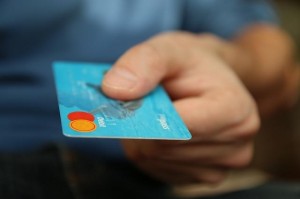 If you have bad credit or too much debt, you might feel as if your situation is hopeless — so why even try? But even though you might be in a bad financial state today, there are ways to reverse the situation and get back on your feet. It’s important to realize that many people go through tough times. Losing a job, getting a divorce or another personal problem can cause a financial setback. But just because you’re discouraged and overwhelmed with what’s going on doesn’t mean you should give up.
If you have bad credit or too much debt, you might feel as if your situation is hopeless — so why even try? But even though you might be in a bad financial state today, there are ways to reverse the situation and get back on your feet. It’s important to realize that many people go through tough times. Losing a job, getting a divorce or another personal problem can cause a financial setback. But just because you’re discouraged and overwhelmed with what’s going on doesn’t mean you should give up.
You’re not going to fix your credit in one day. In fact, even a well-reviewed credit repair company like Lexington Law may require several months or even a year to see a major improvement. However, if you can protect your credit while working toward a better score and less debt, you can move forward without setbacks.
1. Don’t Miss Any Monthly Payments
Once you’ve calculated all of your debts, it’s time to start tackling them. If your credit score is already bad, you can’t afford to miss additional monthly payments. Timely payments make up 35% of your credit score. So even if you have a lot of debt, you can maintain fair or good credit just by paying bills on time every month. This includes credit cards, mortgages, auto loans, student loans and any other loan you might have. With each timely payment, your creditor sends positive activity to the credit bureaus, and it’s this activity that helps repair a low score.
There are several tricks to ensure you never miss a payment. Set a reminder or pay bills within one or two days of getting the statement. Also, sign up for online account management and make online payments. You can submit a payment up to a certain time on the due date without penalty. Some people have had success with automatic bill pay. You can set up automatic payments between your bank and creditors, and this amount is automatically drafted from your bank account every month.
2. Order Your Credit Reports
Ordering your credit report is the only way to get a clear picture of your credit history. Your credit report includes information about all your accounts, including the dates you opened these accounts, the amounts you owe and whether accounts are in good standing. Also, if there are errors on your report, or evidence of fraud, you can identify these problems early and take steps to remove negative information from your credit report. Errors on your credit report can do significant damage, and until you correct these issues, it might be difficult to get a loan or credit card, or you might qualify for higher rates.
Order your free credit report from Annual Credit Report at least once a year, or contact the bureaus directly. Review the reports and dispute any unfamiliar activity. Also, you can freeze your credit to prevent identity theft and fraud. This restricts access to your credit reports, making it impossible for thieves to open accounts in your name.
3. Don’t Apply for New Credit
If you’re already struggling with debt, do not apply for new credit or loans. Not only will this add to your monthly expenses, which can create additional hardship, each credit card or loan application submitted creates a new inquiry on your credit report. Too many inquiries can damage your credit and knock additional points off your score – as much as 2 to 5 points per inquiry. Use cash and only apply for credit when absolutely necessary.
4. Don’t Co-sign for Anyone
Likewise, this isn’t the time to cosign a loan for anyone. If you have okay credit, but too much debt, co-signing a loan adds additional debt under your name. Although you’re not the primary account holder, you will have a measure a responsibility for this debt. If the primary account holder doesn’t pay, the lender will contact you for repayment. This account will also appear on your credit history. Understandably, you may want to help a friend or relative get credit. But at a time like this, you need to be more focused and concerned with repairing your own credit.
5. Use Credit Repair Services
Even if you dispute a negative item on your credit report, there’s no guarantee the credit bureaus will delete this information in a timely manner. Sometimes, you need professional assistance. A credit repair company can work on your behalf to remove legitimate errors from your credit file. Different types of errors can appear on your report. For example, some negative items should automatically fall off your report after seven years. But in some instances, this information remains longer. Working with a credit repair company can speed the removal of these items, plus help with the removal of other erroneous information, such as late payments, collection accounts, etc.
6. Don’t Give Anyone Your Credit Card Information
As you repair your credit, you need to keep your credit card information safe. If your personal data falls into the wrong hands, a dishonest person can do further damage to your credit score. Learn how to recognize phishing techniques, which is when someone sends an email asking for your credit card number and expiration date. Understand that your credit card company – or any company for that matter – will never request this information through email. Also, you can sign up for credit monitoring services to receive alerts anytime someone attempts to open an account in your name. Additionally, monitor your accounts on a daily basis to check for fraudulent activity.
The consequences of a low credit score and too much debt can be long-term. It’s harder to buy a house and car, and a bad credit rating can result in higher insurance premiums and stop certain job opportunities. Recognizing a problem is the first step to recovery. You won’t see dramatic improvements within the first couple of weeks or months, but if you continue to progress, you’ll eventually achieve a top-rated score.
Do you have poor credit that needs improving?














